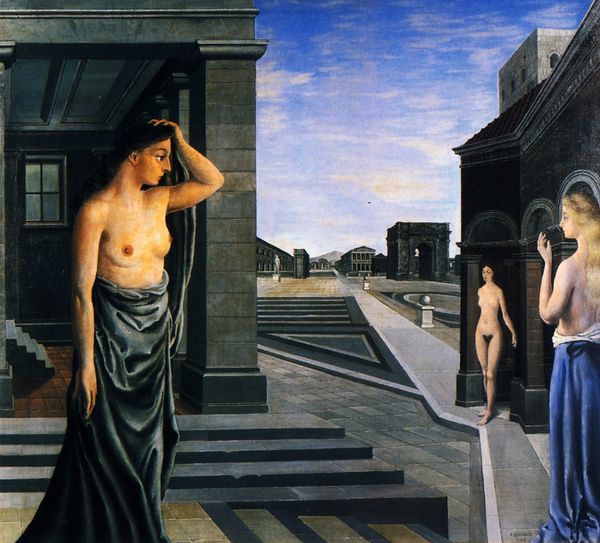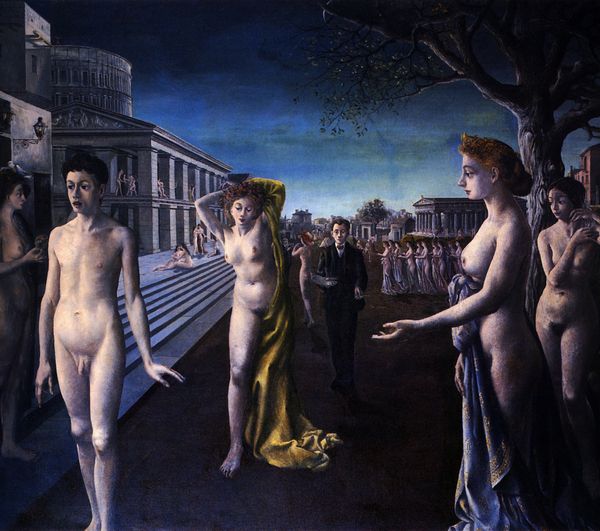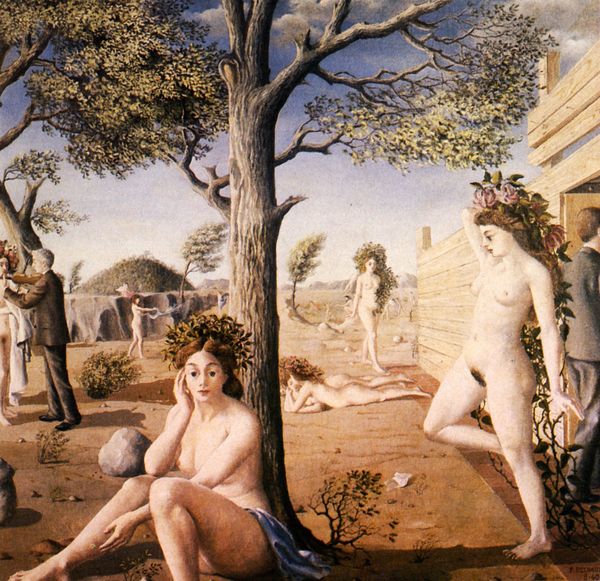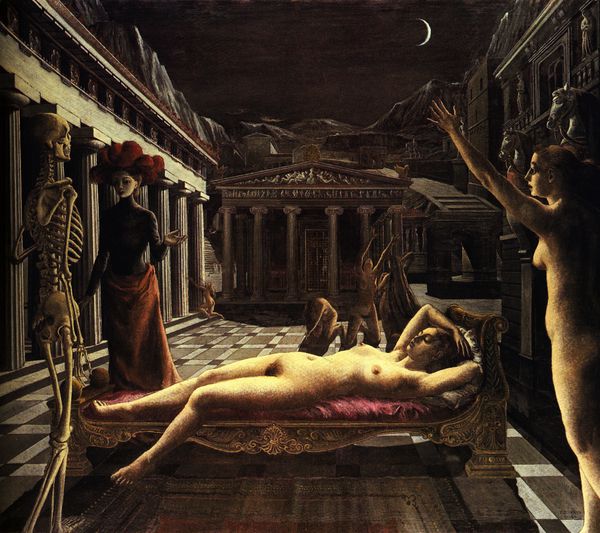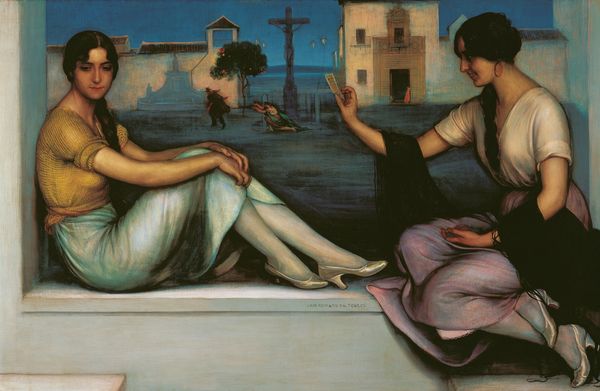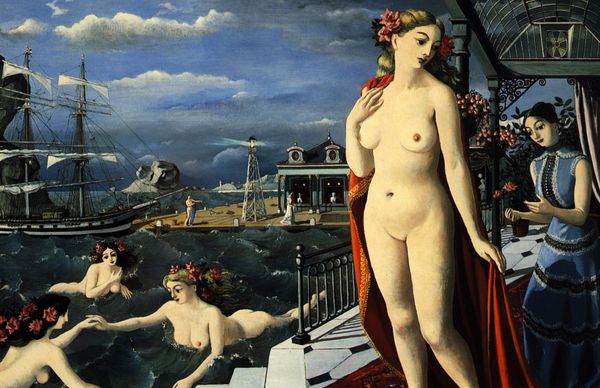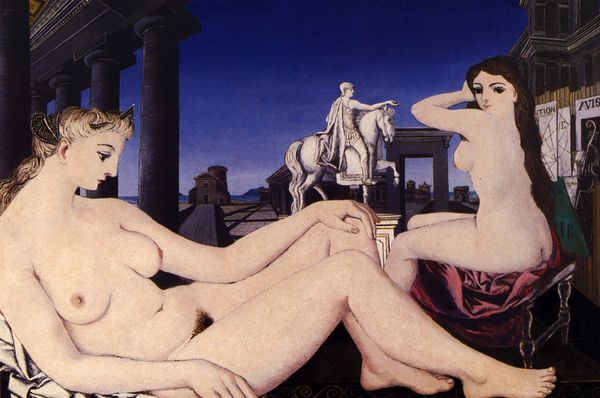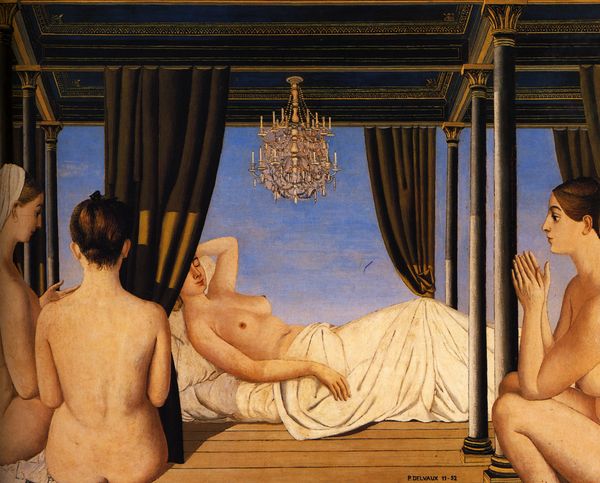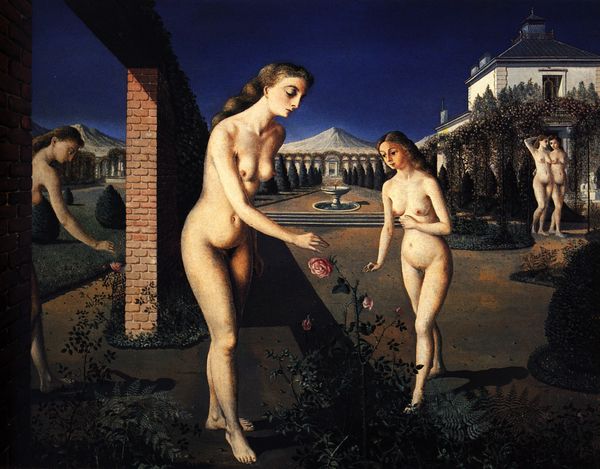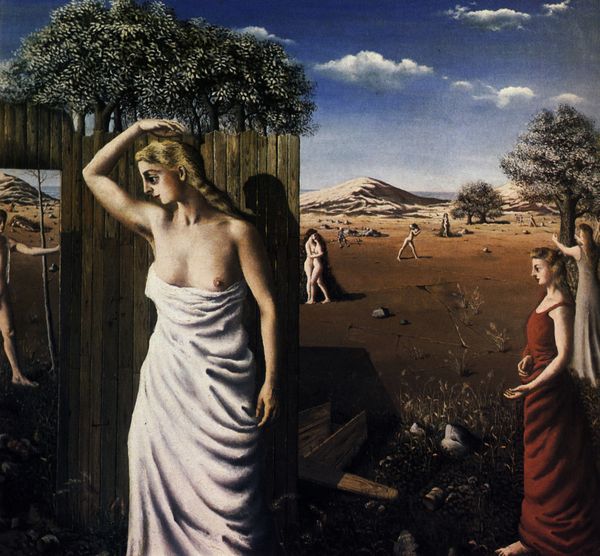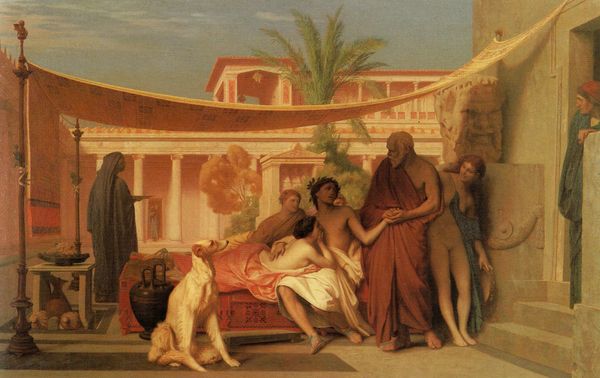
painting, oil-paint, sculpture
#
painting
#
oil-paint
#
landscape
#
figuration
#
oil painting
#
female-nude
#
sculpture
#
surrealism
#
cityscape
#
history-painting
#
nude
#
surrealism
#
erotic-art
Dimensions: 130 x 210 cm
Copyright: Paul Delvaux,Fair Use
Editor: Here we have Paul Delvaux's "The Canape Vert" from 1944, an oil painting with a strangely dreamlike atmosphere. The rigid architecture, the classical figures... they evoke a feeling of being suspended between worlds. How do you interpret this work? Curator: What strikes me is how Delvaux juxtaposes the female nude, traditionally a figure of power and sensuality, within a meticulously constructed, almost sterile architectural space. Consider the historical context: this was painted during the Second World War. Does the dreamlike quality reflect a desire to escape the harsh realities of the time? Perhaps he's critiquing the objectification of women by placing them in this cold, impersonal setting? Editor: That’s interesting. The detachment of the figures does seem intentional, doesn’t it? Curator: Precisely. Think about the power dynamics at play. Who is truly empowered in this scene? Are the women subjects or objects within this carefully staged tableau? And how does that reflect broader societal attitudes toward women in the mid-20th century? Editor: So, it’s not just about the surface beauty or the surreal quality. It's about questioning the historical and cultural narratives embedded within the image. Curator: Exactly. Delvaux uses surrealism not just as a style, but as a tool to dissect and challenge societal norms. What might seem like a beautiful escape is actually a critical examination of power, gender, and the gaze. Editor: I'll never look at Delvaux the same way again. Thank you for broadening my perspective on this and the issues that his paintings may have been expressing about the treatment of women in art, especially considering when it was made. Curator: It’s by looking beyond the immediate image and delving into the socio-political context that we can truly understand an artist's message.
Comments
No comments
Be the first to comment and join the conversation on the ultimate creative platform.
